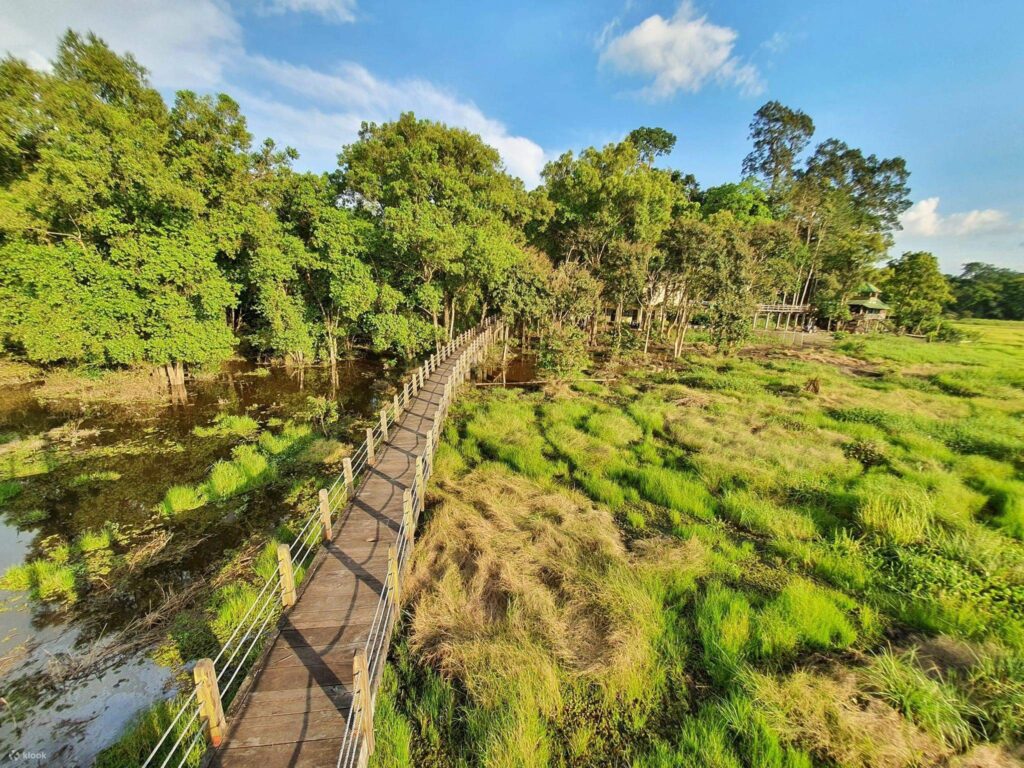Introduction to Eurasian Hoopoes
With their striking feathered crests, long curved beaks, and mesmerizing plumage patterns, Eurasian Hoopoes are the picture of elegance in the avian world. Recognizable by their vibrant orange and black wings and their unmistakable “oop-oop-oop” call, these birds capture the fascination of birdwatchers worldwide.
Native to parts of Asia, Africa, and Europe, the Eurasian Hoopoe (scientifically known as Upupa epops) is one of nature’s most sought-after sights. But did you know that these stunning birds thrive in Vietnam’s diverse landscapes, contributing to the rich tapestry of Vietnam’s wildlife?
From lush forests to serene rural areas, Vietnam has become a key sanctuary where these marvelous birds not only survive but flourish year-round. If you’re curious about where to spot them, what they eat, and efforts being made to protect them, this guide covers it all.
Hoopoes in Vietnam An Overview
Vietnam is a country of incredible biodiversity, and its varied ecosystems provide the perfect home for the Eurasian Hoopoe. Found across the northern, central, and southern regions of the country, these birds frequent open meadows, forests, and semi-arid landscapes.
Their adaptability allows them to thrive in locations ranging from rural farmlands to urban outskirts. However, these birding gems are most often seen in areas with minimal human disturbance, making them a delight for those seeking a tranquil birdwatching experience.
For birdwatching enthusiasts and seasoned ornithologists, Vietnam offers a rare opportunity to observe these charismatic birds up close. But where exactly should you go to find them? The next section dives into the five best habitats to spot the Eurasian Hoopoe in Vietnam.
Detailed Look at 5 Key Habitats
Habitat 1 Cuc Phuong National Park

Tucked away in the Ninh Binh Province, Cuc Phuong National Park is Vietnam’s oldest national park and a haven for bird species, including the Eurasian Hoopoe. The park’s dense jungle interspersed with open grasslands provides these charismatic birds with the ideal environment to forage for insects. Cuc Phuong is not only a birdwatcher’s paradise but also a must-visit destination for wildlife enthusiasts.
Why Visit?
- Spot Hoopoes during the early morning hours.
- Participate in guided birdwatching tours.
- Enjoy the serenity of one of Vietnam’s most biodiverse regions.
Habitat 2 Cat Tien National Park

Located in southern Vietnam, Cat Tien National Park is famous for its birdlife, making it another prime location to spot Eurasian Hoopoes. The park’s mix of wetlands, grasslands, and dry deciduous forests offers the perfect backdrop for observing Hoopoes in their natural setting.
Why Visit?
- Ideal for multi-day birdwatching tours.
- Spot other rare birds like the Germain’s Peacock-Pheasant.
- Explore various ecosystems, including riverine forests.
Habitat 3 Ba Be National Park

Nestled in the heart of northern Vietnam, Ba Be National Park is not just a feast for the eyes but also a significant hotspot for bird species. Hoopoes can frequently be seen along the park’s open grasslands and forest edges, often probing the ground for insects with their signature long beaks.
Why Visit?
- Combine birdwatching with a boat tour on Ba Be Lake.
- Observe numerous bird species unique to northern Vietnam.
Habitat 4 Rural Mekong Delta

The sprawling Mekong Delta in southern Vietnam is a lesser-known but excellent habitat for Eurasian Hoopoes. The rural farmlands and sparse woodlands here provide ample feeding grounds for these birds, making it a surprising yet rewarding location for birdwatchers.
Why Visit?
- Experience the rural charm of the Mekong.
- Spot Hoopoes in rice paddies and village outskirts.
Habitat 5 Pu Luong Nature Reserve

Hidden away in Vietnam’s north-central region, Pu Luong Nature Reserve is a treasure trove of wildlife. Its secluded environment, coupled with expansive grasslands, creates an ideal habitat for Eurasian Hoopoes to thrive unnoticed.
Why Visit?
- Escape the tourist crowds for a peaceful birding experience.
- Combine Hoopoe spotting with eco-tourism activities like trekking.
Behavior and Diet of Hoopoes in Vietnam
Eurasian Hoopoes are fascinating not just for their appearance but also for their intriguing behaviors. These birds are often seen probing the ground with their long, curved bills in search of insects and larvae, which form the bulk of their diet.
They’re solitary yet social creatures. During the breeding season, males perform elaborate displays, fluffing their crests and calling incessantly to attract mates. While foraging, they often hop around energetically, making them an entertaining sight for observers.
One of the most captivating aspects of their behavior is their ability to use their crest feathers to communicate, raising them to show excitement or alarm.
Conservation Status and Efforts
While Eurasian Hoopoes are classified as “Least Concern” on the IUCN Red List, they still face threats from habitat destruction and pesticide use in agricultural areas. Vietnam has made significant strides toward protecting its native wildlife, including establishing protected areas and raising awareness about conserving bird habitats.
Conservation-focused organizations in Vietnam, such as the BirdLife International Vietnam Programme, are actively working to monitor bird populations and establish safe habitats for species like the Eurasian Hoopoe.
What can you do to contribute? Consider supporting eco-tourism ventures that protect natural environments or advocating for sustainable farming practices near key Hoopoe habitats.
People Also Ask
Where can I see Eurasian Hoopoes in Vietnam?
You can spot Eurasian Hoopoes in national parks like Cuc Phuong, Cat Tien, and Ba Be, as well as in open farmlands throughout the Mekong Delta.
What do Eurasian Hoopoes eat?
Eurasian Hoopoes primarily eat insects, larvae, and small invertebrates. Their long beaks allow them to dig into the soil to find food.
Are Eurasian Hoopoes common in Vietnam?
Yes, Eurasian Hoopoes are relatively common in Vietnam and can be found across various regions, especially in undisturbed habitats.
What is unique about the Eurasian Hoopoe’s crest?
The Eurasian Hoopoe’s bright feathered crest can be raised or lowered to express excitement or alarm, serving as a unique communication tool.
How can I help protect Eurasian Hoopoes in Vietnam?
Support conservation organizations, practice sustainable tourism, and avoid disturbing their natural habitats.
Final Thoughts on the Magnificent Eurasian Hoopoe
From their vibrant plumage to their captivating behaviors, Eurasian Hoopoes are truly one of Vietnam’s avian treasures. Whether you’re an avid birdwatcher or a casual nature enthusiast, witnessing these remarkable birds in their natural habitat is an experience like no other.
If you’re planning a trip to Vietnam, don’t miss the chance to explore the many national parks and nature reserves that shelter Hoopoes and countless other fascinating species.
Ready to start your birdwatching adventure? Pack your binoculars, head to one of these amazing locations, and immerse yourself in Vietnam’s vibrant natural world.


